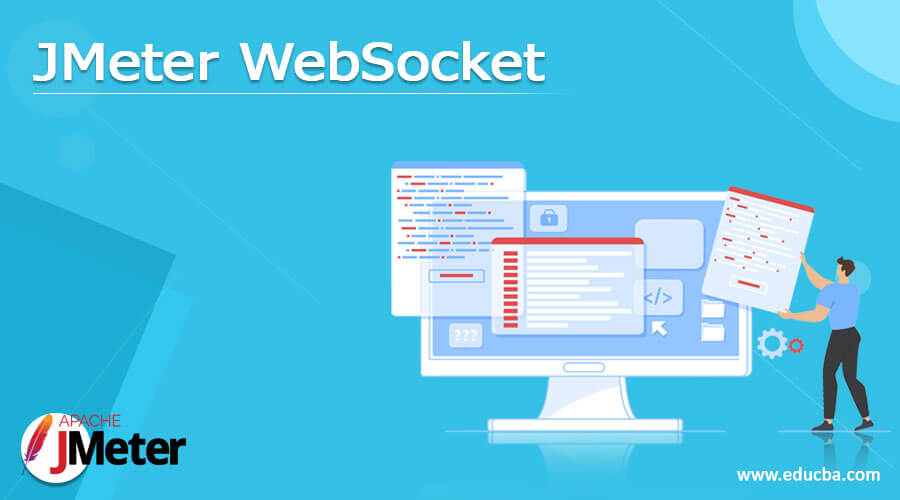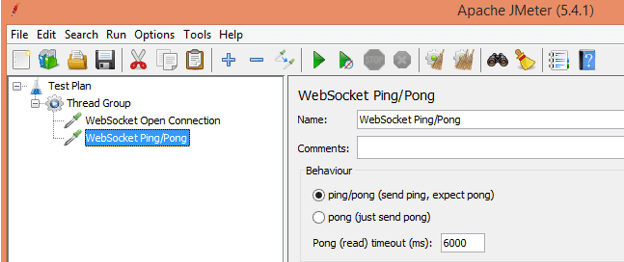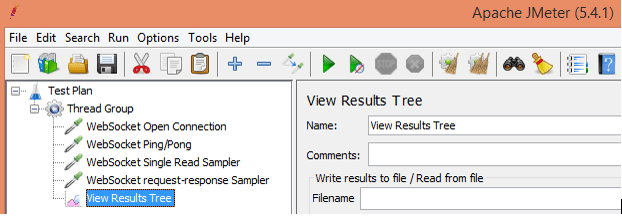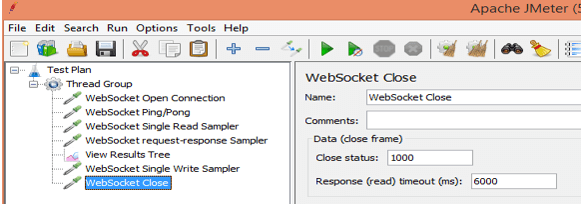Updated March 30, 2023
Definition of JMeter WebSocket
JMeter is an open-source tool to perform load and performance testing. Basically, JMeter provides different functionality to the user, in which WebSocket is one of the functionalities that is provided by the JMeter. Normally WebSocket is one of the protocols that are used to provide the two-way communication channel between server and browser over a single TCP connection. This is one of the popular protocols because it is supported by all modern browsers. But one more important thing is that JMeter is not supported by WebSocket but with the help of some additional plugins such as JMeter WebSocket sampler so we can communicate.
Definition of WebSocket?
WebSocket is a convention that gives full-duplex bi-directional correspondence over a solitary TCP association utilizing default HTTP and HTTPS ports. It is upheld by most of the current internet browsers and is utilized to make talks, continuous games, and applications; and so on the primary thought of the convention is that one association is being utilized for two-way correspondence, instead of Ajax/iframes/XMLHttpRequests.
WebSocket correspondence comprises “outlines” – information pieces, which can be sent from one or the other side, and can be of a few sorts: “message outlines” – contain message information that gatherings ship off one another. “Parallel information outlines” – contain twofold information that gatherings ship off one another.
One more typical influx of users in the present surge of web applications is responsive ongoing applications utilizing WebSocket. WebSocket is a convention that gives full-duplex bi-directional correspondence over a solitary TCP association utilizing default HTTP and HTTPS ports. Dissimilar to different conventions, one association is utilized for two-way correspondence for the WebSocket convention. This makes it a decent contender for creating program talk applications, gaming applications, constant program checking devices, etc. It is upheld on most of the current web peruse. The WebSocket convention is a free TCP-based convention. It’s just relationship to HTTP is that its handshake is deciphered by HTTP servers as an Upgrade demand. As a matter of course the WebSocket convention involves port 80 for normal WebSocket associations and port 443 for WebSocket associations burrowed over TLS
Installation of JMeter websocket
Now let’s see how we can install WebSocket in JMeter as follows.
1. First we need to download the recent plugin JAR.
2. Copy downloaded jar file and paste inside the lib/ext folder of JMeter.
3. Now restart the JMeter.
After that, we need to manipulate some elements in JMeter as follows.
- Config Element: Here we need to set up the binary frame filter, text frame filter, and ping /pong frame filter.
- Samplers: Here we need to do the open connection which means we can add the different samplers as per our requirement.
- Assertions: We are also able to provide the assertion to Thread Group but here we have binary response assertion and display the result in view tree listeners.
Config Elements JMeter WebSocket
Now let’s see how we can configure elements of WebSocket in JMeter as follows.
First, we need to add the Test Plan in JMeter as shown in the following screenshot.
In a second step, we need to add the Thread Group inside the Test Plan as shown in the following screenshot as follows.
Now add the WebSocket open Connection sampler into the thread group as shown in the following screenshot as follows.
In the above screenshot, we can see WebSocket open connection sampler, here we have different files as per our requirement we can fill.
We also need to consider some additional samplers as follows.
- WebSocket Open Connection: The association break boundary determines how long JMeter will hang tight for an association prior to bombing by the break. The read break boundary indicates how long JMeter will sit tight for a reaction from the server prior to flopping by the break. It is used to open the connection of WebSocket as shown in the above screenshot.
- WebSocket Ping/Pong: Pong break implies that the sampler will come up short on the off chance that JMeter doesn’t get a pong message inside 6 seconds. This sampler will utilize the current association. It is used to send ping and acknowledge pong as shown in the following screenshot as follows.
WebSocket request-response Sampler: Set the accompanying fields:
Association: utilize an existing association
Information type: Binary
Demand information: 0x62 0x6c 0x61 0x7a 0x65 0x6d 0x65 0x74 0x65 0x72
Reaction (read) break (ms): 6000
Demand information acknowledges double casings in hexadecimal configuration, for instance, 0x6d or 6d. The worth of our present solicitation implies BlazeMeter in the hexadecimal organization. We can likewise involve JMeter factors in this field.
as shown in the following screenshot as follows.
WebSocket Single Write Sampler: Fill in the accompanying qualities:
Association: utilize an existing association
Information type: Text
Demand information: BlazeMeter-text
Same with the WebSocket demand reaction Sampler; we can utilize the current association or make another one. Information should be in text design. It is only used to send binary or text frames of WebSocket as shown in the following screenshot as follows.
WebSocket Single Read Sampler: Fill in the accompanying qualities:
Association: utilize an existing association
Information type: Binary
Demand information: 0x62
The solicitation information includes hexadecimal organization and means BlazeMeter-text. It is only used to receive binary or text frames of WebSocket as shown in the following screenshot as follows.
WebSocket Close: Fill in the accompanying qualities:
Closed status: Binary
Reaction (read) break: 6000
This sampler will close the current WebSocket association with the explanation ‘1000: sampler mentioned close’.
It is used to close the WebSocket connection as shown in the following screenshot as follows
Now save the Test Plan and run it. After execution of the Test Plan, we can see the result in the following screenshot as follows.
Conclusion
We hope from this article you learn more about the JMeter WebSocket. From the above article, we have taken in the essential idea of the JMeter WebSocket and we also see the representation and example of the JMeter WebSocket. From this article, we learned how and when we use the JMeter WebSocket.
Recommended Articles
This is a guide to JMeter WebSocket. Here we discuss the definition, how to install, how to configure and Examples with code implementation. You may also have a look at the following articles to learn more –












